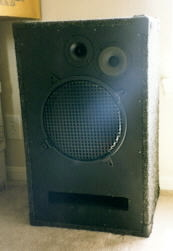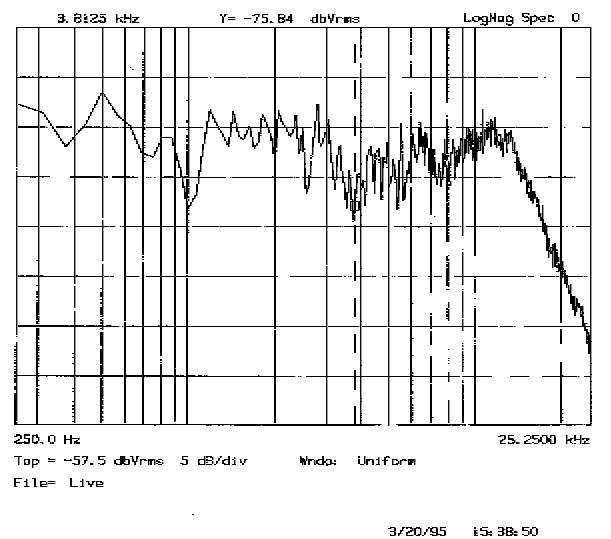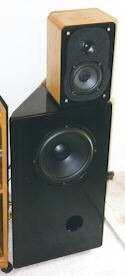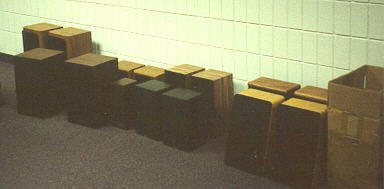The nickname for this project was “disco boxes.” As the name implies, these speakers were built for rocking and dancing. My plan was to build a “popular” sounding speaker, sell it for about my cost, and thereby gain some speaker building experience. Well, it sounded like a good plan.
My first mistake was not going for deep enough bass. The 12″ Pioneer “musician” driver, even in a vented design, has response down to only about 70 Hz. But it can handle about 100 watts of power at that 70 Hz! This is with an efficiency rating of 96 dB.
Next, the mid-range in the design pictured was not part of the original plan. The design started with the horn tweeter and 12″ woofer only, with a 2nd-order cross-over between the two at about 4 Khz. Believe it or not, the combination didn’t sound too bad. The on-axis response had a nice peak where the 12″ woofer was breaking up, and a small dip just before the tweeter kicked in. The off-axis response is another story. A 12″ woofer doesn’t radiate much power above 1 kHz off-axis. Imaging was poor, but then I didn’t know too much about imaging (even though I thought I did), and really didn’t care. They were loud, and could take as much power as anyone I knew could throw at them.
After having only *one* person look at my disco box for sale, I gave up on the notion of recovering any money on the project. My brother bought his first stereo, needed some speakers, so borrowed the disco boxes for a while. Did I mention my brother and I lived in a dormitory at this time? With 100 watts of Carver power, 96+ dB efficiency, loudness on, and a bass knob most the way up, life in the dormitory was very bad for my bro’s neighbors. The tradition at Michigan Tech is to play Queen’s Another One Bites The Dust as the freshman walk from the dormitories to their first (and sometimes final) chemistry 101 test. An hour later this is followed up with Taps . The year my brother had the disco boxes, the entire campus shared in the auditory, freshman chemistry experience!
Later I decided to relieve the 12″ woofer from operating up to 4 kHz. I added an Audax 4″ paper mid-range. The new crossover frequencies were set to 800 Hz with a 4th-order Linkwitz-Riley network, and 3rd-order (acoustic) at 5 kHz (1st-order electric on mid at 4 kHz, 2nd-order electric at 5 kHz on the tweeter). The sound of the disco boxes is no longer harsh, and the imaging quality is quite surprising.
Here is the final response, measured using a mitey-mic and a laboratory spectrum analyzer with the speaker sitting on a trash can. The distance is about a meter. Notice that there are some dips in the response at 1 kHz and 4 kHz. These are from not being able to phase align the drivers well. The phase errors at cross-over were all 1/4 of a wavelength, so neither a positive or negative phase switch on any driver could eliminate the dips. Instead, the best I was able to do was minimize the dips depth and width.









